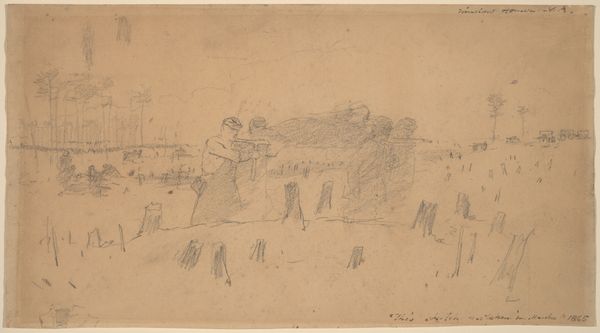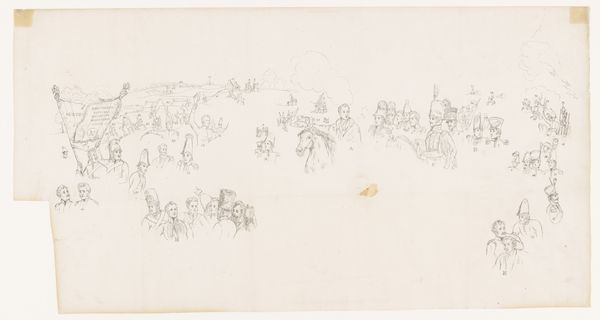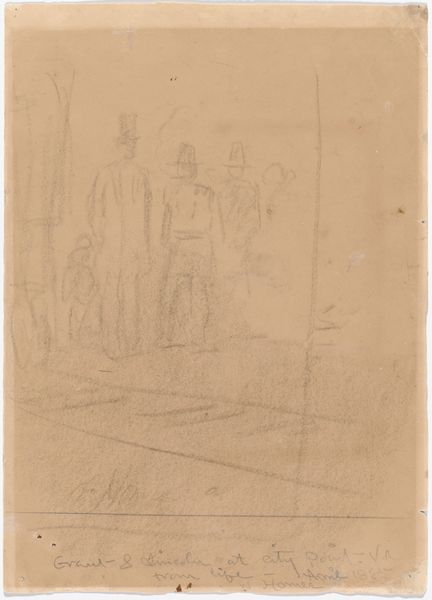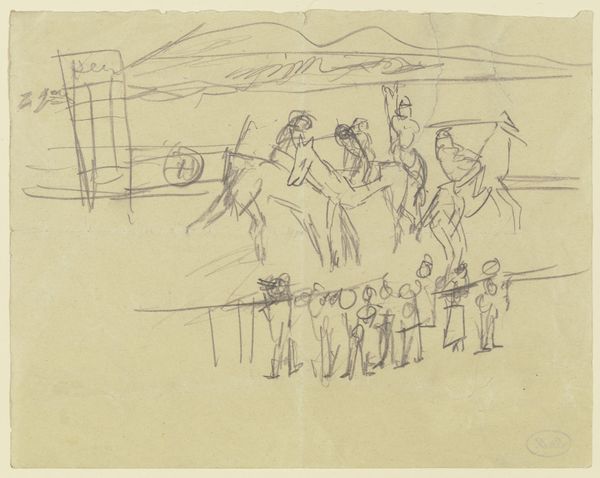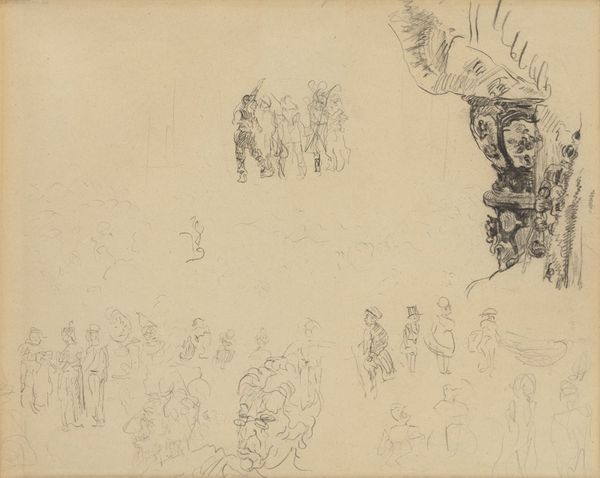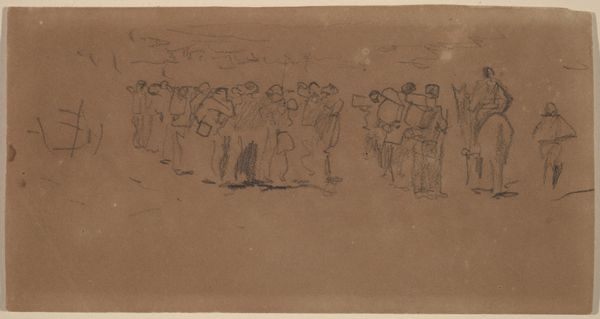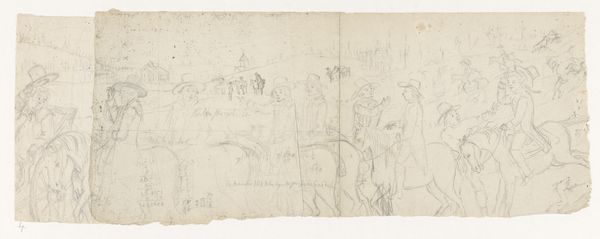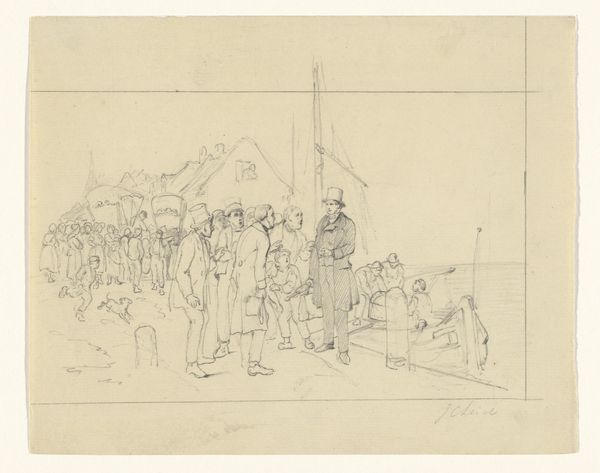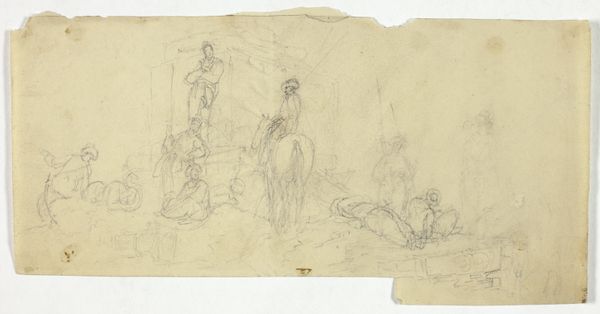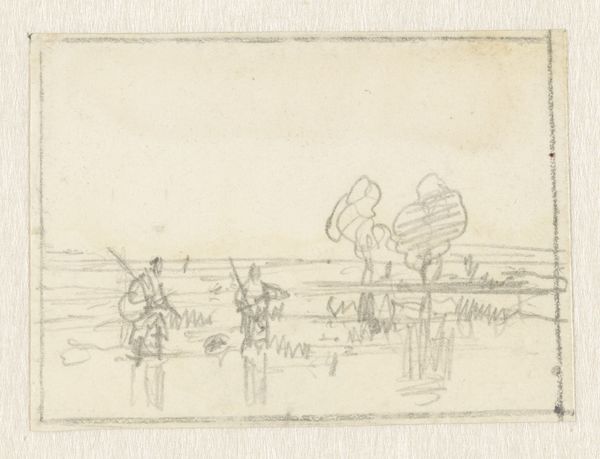![Line-ups and Trenches [recto] by Winslow Homer](/_next/image?url=https%3A%2F%2Fd2w8kbdekdi1gv.cloudfront.net%2FeyJidWNrZXQiOiAiYXJ0ZXJhLWltYWdlcy1idWNrZXQiLCAia2V5IjogImFydHdvcmtzLzA4NDVjYTQyLWJjMDAtNDdjYy1hZWZmLTZmOTIxNTMzZTBhZS8wODQ1Y2E0Mi1iYzAwLTQ3Y2MtYWVmZi02ZjkyMTUzM2UwYWVfZnVsbC5qcGciLCAiZWRpdHMiOiB7InJlc2l6ZSI6IHsid2lkdGgiOiAxOTIwLCAiaGVpZ2h0IjogMTkyMCwgImZpdCI6ICJpbnNpZGUifX19&w=3840&q=75)
drawing, pencil
#
drawing
#
landscape
#
figuration
#
pencil
#
realism
Dimensions: sheet: 25.3 × 33 cm (9 15/16 × 13 in.)
Copyright: National Gallery of Art: CC0 1.0
Curator: Winslow Homer’s 1864 pencil drawing, “Line-ups and Trenches,” offers a glimpse into the American Civil War. What strikes you about it? Editor: The sketches are so immediate, almost like snapshots. I notice the rows of tents and the soldiers...It feels more like a collection of observations than a unified scene. I wonder, what was Homer trying to capture here? Curator: Consider the means of production, the materials he chose. Pencil sketches are immediate, reproducible. This wasn't an oil painting intended for a wealthy patron. This was on-the-ground documentation, possibly for mass distribution as illustrations. Think about the labor involved: Homer traveling, observing, rapidly sketching, perhaps under duress. The social context shaped the artistic process, creating these fleeting figures. What is striking to you? The way those massed ranks evoke the impersonal organization of labor needed to field this kind of war? Editor: The use of pencil, like you mentioned, and its reproducibility speaks to its time, its intended purpose and distribution. But, is the somewhat incomplete rendering perhaps a commentary on the nature of war itself? Or an acknowledgement of its human toll by leaving something missing? Curator: That's a fascinating thought. But, let's look at the materials again: readily available paper and graphite. They are cheap. Meant to be disseminated for news publication about the War, a social product. Even his 'signature' at lower right could just be a printing notation. I encourage us to see those absences as potential gaps created by economic restraints on the artistic rendering process. Editor: That gives me a totally different way to interpret what's shown—or isn’t shown! I didn’t consider how that level of dissemination would change the approach. Curator: Exactly. By focusing on the material reality and means of production, we reveal a deeper understanding of its function as both artwork and record.
Comments
No comments
Be the first to comment and join the conversation on the ultimate creative platform.


